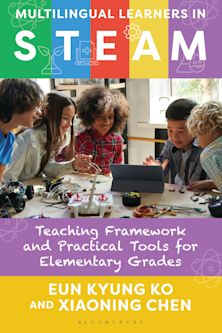- Home
- ACADEMIC
- Education
- Classroom Practice
- Teacher-Student Relationships
Teacher-Student Relationships
Crossing into the Emotional, Physical, and Sexual Realms
Teacher-Student Relationships
Crossing into the Emotional, Physical, and Sexual Realms
You must sign in to add this item to your wishlist. Please sign in or create an account
Description
Why are so many public school teachers, administrators, and coaches choosing to become romantically and sexually involved with teenage students and players? Since 2000, numbers of intimate relationships between teachers and students have skyrocketed. Teacher arrests are at all-time highs. Is there a correlation between these relationships and communication and social technologies? The book explores:
What is driving those in public and private education to have romantic and sexual relationships with their students, and to jeopardize their careers, families, reputations, and freedom? What roles do communication and social technologies play in feeding teacher-student relationships?Who is protecting teenagers from predator-teachers and predator-coaches, in our schools? Is there a new phenomenon in schools: The Predator Teenage Student?What practical strategies can be put in place to protect teenagers from sexual predators on our campuses?The appropriate educational use of communication technologies on high school campuses.
This book is provocative and relevant for educators at all levels, public and private. It is also a must-read for professors, teachers-in training, athletic and academic coaches, school administrators, and parents.
Table of Contents
TABLES AND FIGURES
PREFACE
CHAPTER 1 BOUNDARIES AND BARRIERS TO TEACHER-STUDENT RELATIONSHIPS
CHAPTER 2 TECHNOLOGY, TEMPTATION, AND THE TEENAGER
CHAPTER 3 TEENAGE BRAINS, MATURITY, AND EMOTIONS
CHAPTER 4 RELATIONSHIPS BETWEEN TEACHERS AND TEENAGE STUDENTS
CHAPTER 5 SOCIAL NETWORKING AND RELATIONSHIPS IN A DIGITAL WORLD
CHAPTER 6 SCHOOL CULTURE AND RELATIONSHIPS
CHAPTER 7 EDUCATION POLICY: MORALITY, PURPOSE, AND COMMON SENSE
CHAPTER 8 TECHNOLOGY: TOOLS AND TACTICS
ABOUT THE AUTHOR
INDEX
Product details
| Published | Apr 08 2013 |
|---|---|
| Format | Ebook (PDF) |
| Edition | 1st |
| Extent | 1 |
| ISBN | 9798216244875 |
| Imprint | R&L Education |
| Illustrations | 4 b/w illustrations; 14 tables |
| Publisher | Bloomsbury Publishing |
About the contributors
Reviews
-
High school teacher and education theorist Zarra investigates how young adult brains process emotions and how the use of technology impacts mental maturity. In rethinking how educators address the topic, Zarra provides guidelines for creating boundaries between students and teachers that simultaneously strengthen their relationships in appropriate ways. His discussion extends to topics of developing character in children and how the brain development of children influences their interaction with educators later in life. Readers of Thomas Lickona’s Character Matters and Educating for Character as well as Eric Jensen’s Teaching with the Brain in Mind and Brain-Based Learning will find Zarra’s intersections useful. VERDICT The practical guidelines mostly boil down to common sense; however, the author illuminates the topic with neuroscientific research that stages a forum for a continued dialog.
Library Journal
-
Dr. Zarra's resource is packed with insights and powerful discussion questions. In the current social media climate, this is a must for all educators!
Eric Jensen, author of Teaching with the Brain in Mind, and international consultant on brain-based learning
-
As the Olympics commentators say, 'Zarra nailed it!' The 'it' is the current reality of American schools and the changing relationships between teachers and students. Dr. Zarra lays out the new world of sexting, bullying and sexual manipulation, and the eroding of authority and boundaries in our classrooms. This blockbuster book is a must read both for those entering the teaching profession and older educators wondering what is happening to the school environment.
Kevin Ryan, Founder of the Center for Character and Social Responsibility, Boston University
-
Zarra’s book is the map you’ve been waiting for—clear, accessible, useful, and well aimed. You’ll find the volume full of examples, principles, and sound advice—a captain’s guide to charting the deep waters of moral reasoning, of practical wisdom, of tutored intuition, and of interpersonal obligations—all in the context of modern and postmodern education, whether online or in person. Furthermore, one of the greatest strengths of Zarra's book is its ability to articulate sound educational and pedagogical reasons without descending habitually into the mind-numbing morass of education-speak, and the affected jargon that too often beclouds rather than illumines the truths under review.
Michael Bauman, Professor of Theology and Culture, Hillsdale College


































